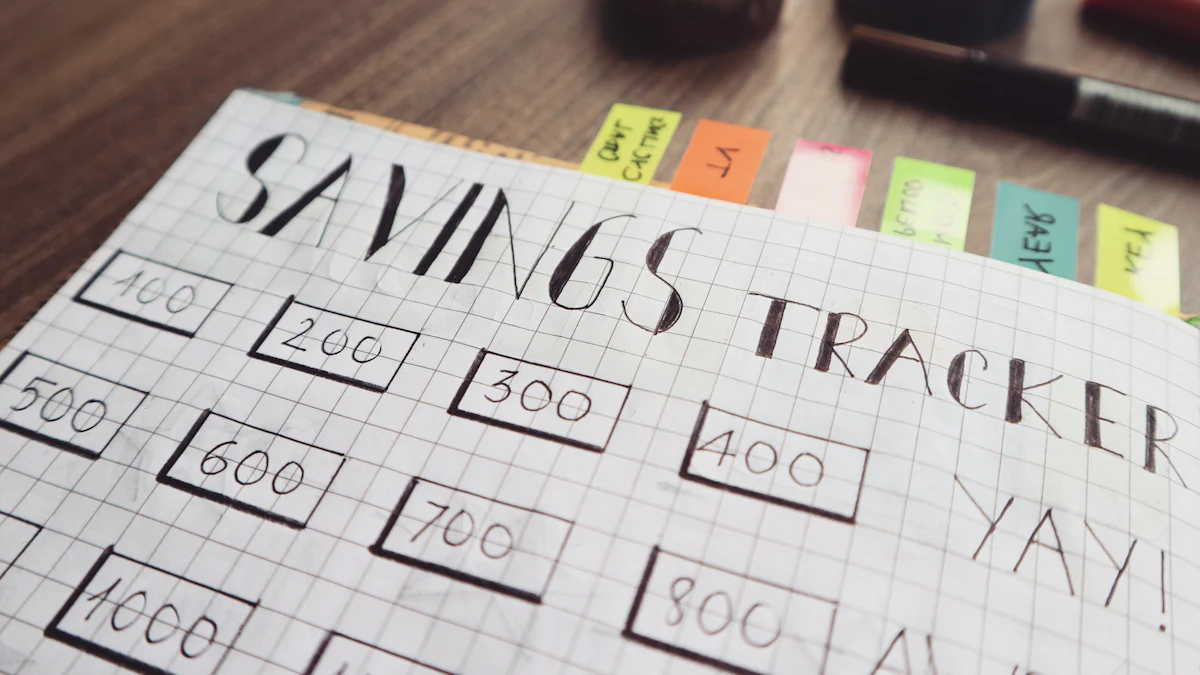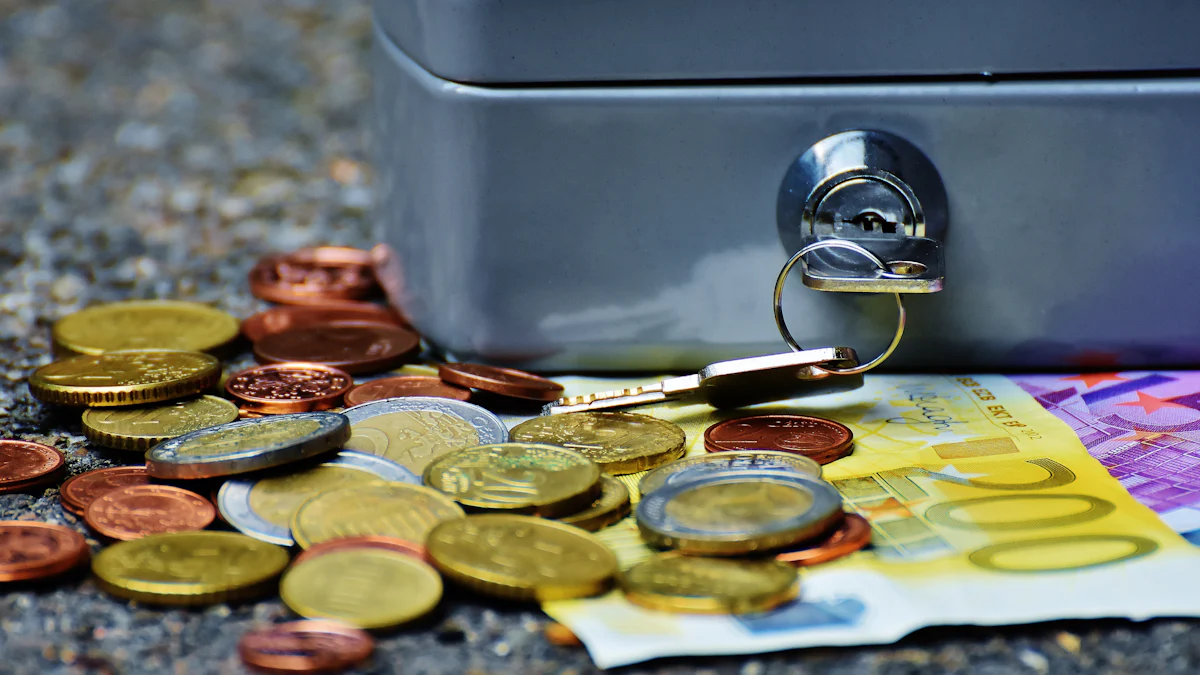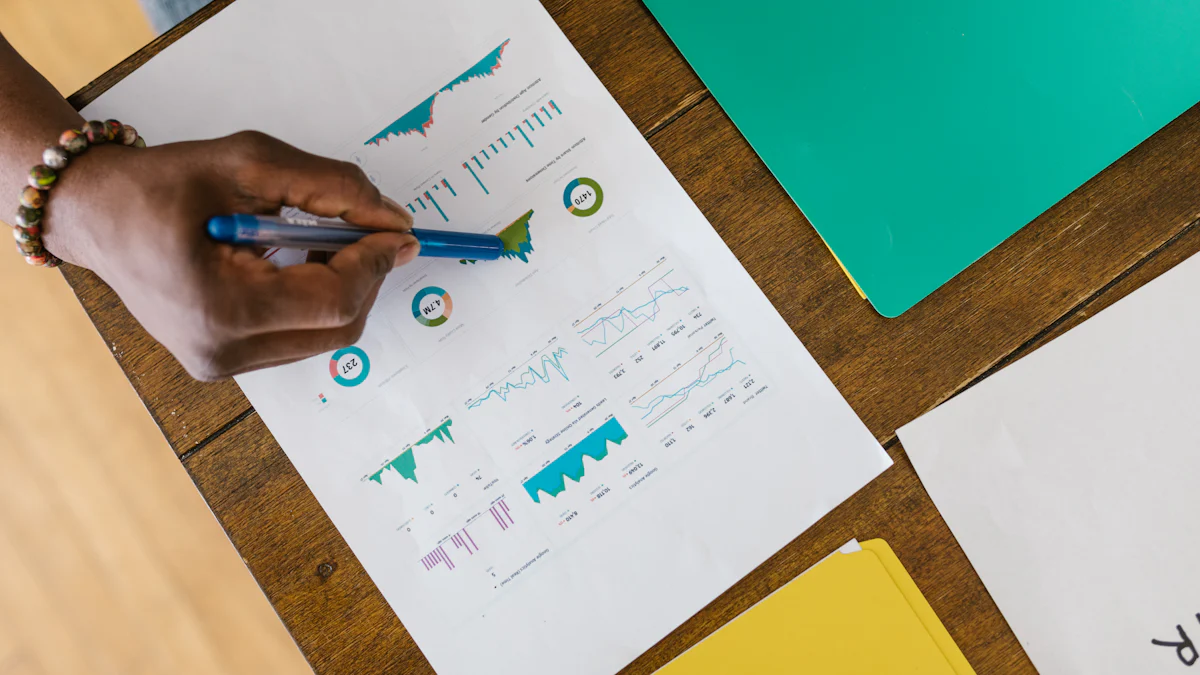Why and How to create an emergency fund

Imagine facing a sudden job loss or a hefty medical bill without a financial safety net. It’s stressful, right? That’s why it’s crucial to create an emergency fund. This fund acts as your financial shield, helping you handle unexpected expenses without falling into debt. Did you know 27% of U.S. adults have no emergency savings? This leaves many vulnerable during a crisis. An emergency fund not only covers essentials like housing or car repairs but also gives you peace of mind. You’ll feel more secure knowing you’re prepared for life’s surprises when you create an emergency fund.
Key Takeaways
An emergency fund is like a money safety net. It helps you pay for surprise costs without borrowing money.
Try to save enough to cover 3-6 months of basic needs. This will help during tough times like losing a job or big medical bills.
Keep your emergency money in a safe account, like a savings or money market account. These accounts are secure and easy to use.
Set up automatic savings to add money regularly. This helps you save without thinking and stops you from spending it.
Only use your fund for real emergencies. After using it, save again quickly to stay financially safe.
What is an emergency savings fund?

Definition and purpose of an emergency fund
An emergency savings fund is your financial safety net. It’s money you set aside specifically for unexpected expenses, like medical bills or sudden car repairs. Think of it as a buffer that protects you from financial emergencies. When life throws you a curveball, this fund helps you stay afloat without relying on credit cards or loans. It’s not just about covering costs—it’s about giving you peace of mind during tough times.
The purpose of an emergency fund is simple: to provide financial security when you need it most. Whether it’s a job loss or an urgent home repair, having this fund ensures you can handle the situation without added stress. It’s your first line of defense against financial instability.
Key benefits of having an emergency fund
Building an emergency savings fund comes with several benefits that can transform your financial health:
It reduces stress. Knowing you have money set aside for emergencies can ease your worries about the future.
It encourages better saving habits. You’ll find yourself prioritizing savings over unnecessary spending.
It helps you avoid debt. Instead of turning to high-interest loans or credit cards, you can rely on your fund to cover unexpected expenses.
By creating an emergency fund, you’re not just preparing for the unknown—you’re also building a stronger financial foundation.
Examples of emergencies it can cover
Emergencies come in many forms, and your fund can help you tackle them head-on. Here are some common situations where an emergency savings fund can make all the difference:
Medical emergencies, like unexpected hospital bills.
Car problems, such as a sudden breakdown or costly repairs.
Losing a job and needing money for essential expenses while you search for a new one.
Household repairs, like fixing a leaking roof or a broken furnace.
An unexpected move or life change that requires immediate funds.
Pet health emergencies, like a surprise vet bill.
Having this fund means you won’t have to scramble for cash or take on debt when life surprises you. It’s all about staying prepared and protecting your financial well-being.
How much should you save in your emergency fund?
The 3-6 months rule explained
You’ve probably heard about the three to six months rule for emergency savings. But what does it mean? This guideline suggests saving enough to cover three to six months of your essential expenses. It’s based on historical data, like unemployment trends during The Great Recession, which showed how long people typically needed to find new jobs. If you’re in a single-income household, aim for closer to six months of expenses. Dual-income households can target at least three months since there’s a backup income.
This rule gives you a financial cushion to handle emergencies like job loss or unexpected medical bills. It’s not a one-size-fits-all approach, though. Your situation might require more or less, depending on your lifestyle and financial needs.
Factors influencing your savings target
How do you determine how much you need to save? Several factors come into play, including:
Income stability: If your income fluctuates or you’re self-employed, aim for a larger fund.
Family size: A single adult may need less than a family with kids.
Debt obligations: If you have loans, you’ll need extra savings to cover payments during tough times.
Lifestyle and expenses: A minimalist lifestyle requires less, while a high-cost lifestyle demands more.
Financial situation: If you already have a financial cushion, you might not need as much.
Some experts, like Suze Orman, even recommend saving up to eight months of expenses for added security. Think about your unique circumstances to set the right goal.
Steps to calculate your monthly expenses
To figure out your emergency fund target, start by calculating your monthly expenses. Here’s how:
Track your spending: Review your bank statements or use budgeting tools to see where your money goes.
List essential expenses: Include rent or mortgage, utilities, groceries, insurance, and debt payments.
Add variable costs: Account for irregular but necessary expenses, like car maintenance or medical bills.
Multiply by three to six months: Once you know your monthly total, multiply it by three to six. This gives you a clear savings goal.
For example, if your monthly expenses are $3,000, you’ll need $9,000 to $18,000 in your emergency fund. Adjust this based on your lifestyle and financial needs. Remember, building this fund takes time, so start small and stay consistent.
Where to keep your emergency savings fund
Best options: Savings accounts and money market accounts
Choosing the right place to store your emergency savings fund is just as important as building it. You want a spot that keeps your money safe while allowing easy access when life throws you a curveball. High-yield savings accounts and money market accounts are excellent options for this.
Here’s why these accounts work so well:
They offer flexible access to your funds without penalties.
You’ll earn higher interest rates compared to traditional savings accounts, helping your money grow over time.
Your funds are insured up to $250,000, providing a solid safety net.
Many money market accounts come with built-in payment methods like debit cards or checks, making withdrawals simple.
By separating your emergency fund from your everyday spending account, you’ll reduce the temptation to dip into it for non-emergencies. These accounts strike the perfect balance between accessibility and growth.
Why accessibility and safety are crucial
Emergencies don’t wait for the right moment—they can happen anytime. That’s why keeping your emergency fund in a safe and accessible place is critical. Imagine needing cash for a sudden car repair or medical bill. Quick access to your funds can save you from relying on high-interest loans or credit cards.
Here’s what to look for:
Choose an account that allows you to withdraw money immediately when needed.
Keep your emergency fund separate from your daily accounts to avoid accidental spending.
Prioritize safety by selecting accounts insured by the FDIC or NCUA, ensuring your money is protected.
Accessibility and safety give you peace of mind, knowing your financial backup plan is ready when you need it most.
Avoiding risky investments for your emergency fund
Investing your emergency fund in volatile assets like stocks might seem tempting, but it’s a risky move. Emergencies often require immediate cash, and investments don’t always cooperate. If the stock market crashes, you could face significant losses or delays in accessing your money.
Here’s why risky investments aren’t ideal:
You might need to sell stocks during a downturn, losing money in the process.
Market closures during major events could block access to your funds.
Long-term investments aren’t designed for short-term emergencies, increasing your financial vulnerability.
Stick to low-risk options like savings or money market accounts. They ensure your emergency fund remains a reliable safety net, ready to support you when life takes an unexpected turn.
How to build an emergency fund effectively

Start small and set achievable goals
Starting small is the key to building an emergency fund without feeling overwhelmed. You don’t need to save thousands right away. Begin with a manageable amount, like $20 or $50 per paycheck, and increase it as your budget allows. Setting a specific emergency fund goal can keep you motivated. For example, aim to save $500 first, then work toward a larger cushion like three months of expenses.
Here are some practical money saving tips to get started:
Determine a realistic monthly emergency savings goal based on your income and expenses.
Automate your savings by setting up transfers after each paycheck.
Use windfalls like bonuses or tax refunds to give your fund a quick boost.
Tracking your progress is also important. Regularly check your balance to see how close you are to your goal. Celebrate small milestones, like reaching your first $1,000. These steps make saving for emergencies feel achievable and rewarding.
Automate your savings for consistency
Automating your savings is one of the easiest ways to build an emergency fund consistently. When you set up automatic transfers from your checking account to your savings account, you remove the temptation to spend that money. It’s like paying yourself first. Plus, it ensures your fund grows steadily over time.
Here’s why automation works:
It simplifies the saving process, so you don’t have to think about it.
It ensures regular contributions, helping you stay on track with your emergency fund goal.
It reduces the risk of overspending since the money is moved before you can use it.
Most banks let you schedule transfers after each paycheck. Even small amounts, like $25 per week, can add up quickly. Over a year, that’s $1,300—a solid financial cushion for unexpected expenses.
Cut unnecessary expenses to free up cash
Freeing up cash for your emergency fund doesn’t mean sacrificing everything you enjoy. It’s about identifying areas where you can cut back without feeling deprived. Start by reviewing your spending habits. Are there subscriptions you rarely use? Could you skip a few takeout meals each month? Small changes can make a big difference.
Here are some common expenses you can trim:
Luxury purchases, such as new gadgets or designer clothes.
Vacations, which should come from a separate vacation fund.
Redirecting this money toward your emergency fund helps you reach your goal faster. For example, skipping a $5 coffee each weekday saves $100 a month. That’s $1,200 a year—enough to cover a minor emergency or start building an emergency fund. Every little bit counts when creating a reliable backup plan.
Use windfalls like bonuses or tax refunds
Unexpected money, like a bonus from work or a tax refund, can give your emergency fund a big boost. Instead of spending it on something temporary, why not use it to strengthen your financial safety net? These windfalls are perfect for growing your savings quickly without affecting your regular budget.
Here’s how you can make the most of them:
Commit to a percentage: Decide in advance how much of any windfall you’ll save. For example, you could put 50% into your emergency fund and use the rest for other goals or treats.
Act immediately: As soon as the money hits your account, transfer it to your emergency fund. This prevents you from spending it impulsively.
Celebrate small wins: If a bonus helps you reach a milestone, like saving your first $1,000, take a moment to appreciate your progress.
Using windfalls strategically can help you build an emergency fund faster. It’s a simple way to turn unexpected money into long-term financial security.
Monitor your progress and stay motivated
Tracking your progress keeps you focused and motivated. It’s easy to lose sight of your goal if you don’t check in regularly. By monitoring your savings, you’ll see how far you’ve come and stay inspired to keep going.
Here’s how to stay on top of it:
Set milestones: Break your goal into smaller steps, like saving $500, $1,000, or one month of expenses. Each milestone gives you a reason to celebrate.
Use tools: Budgeting apps or spreadsheets can help you track your savings. Seeing the numbers grow can be incredibly motivating.
Remind yourself of the “why”: Think about the peace of mind your emergency fund provides. Visualize how it will help you handle unexpected expenses without stress.
Staying motivated doesn’t have to be hard. Celebrate your wins, no matter how small, and remind yourself that every dollar saved brings you closer to financial security.
When and how to use your emergency fund responsibly
Identifying legitimate emergencies
Knowing what constitutes an emergency is the first step to using your fund wisely. Emergencies are unexpected, urgent, and necessary expenses that can’t wait. Think of situations like a sudden job loss, a medical crisis, or urgent car repairs. These are the moments when your emergency fund becomes your lifeline.
Ask yourself a few questions before dipping into your fund:
Is this expense truly unexpected?
Will delaying it cause more harm or financial hardship?
Is it essential for your daily life or well-being?
For example, paying for a broken furnace in the middle of winter qualifies as an emergency. On the other hand, upgrading your kitchen appliances doesn’t. By clearly defining emergencies, you’ll protect your fund for when you need it most.
Avoiding misuse of your emergency fund
It’s easy to justify spending your emergency fund on non-essentials, but doing so can leave you unprepared for real crises. Avoid common pitfalls like using your fund for vacations, new clothes, or home improvement projects. These aren’t emergencies—they’re luxuries or planned expenses.
Here’s a quick list of what not to use your fund for:
Non-essential travel or vacations.
Seasonal events like holiday shopping or back-to-school supplies.
Entertainment, such as concerts or sporting events.
Impulse purchases, like gadgets or hobbies.
Treat your emergency fund as a sacred backup plan. It’s there to cover necessities during a financial crisis, not to fund poor planning or indulgences.
Replenishing your fund after use
Once you’ve used your emergency fund, it’s crucial to replenish it as soon as possible. Start by returning to your regular savings routine. If you can, increase your contributions temporarily to rebuild your financial cushion faster.
Here are some tips to replenish your emergency fund:
Redirect any extra income, like bonuses or tax refunds, into your fund.
Cut back on non-essential spending until your fund is restored.
Set a timeline to reach your savings goal again.
Think of replenishing your fund as recharging your safety net. The faster you rebuild it, the better prepared you’ll be for the next unexpected expense.
Tip: Treat your emergency fund like a financial lifeline. Use it wisely, and always make it a priority to rebuild after use.
Creating an emergency fund is one of the smartest financial moves you can make. It gives you peace of mind, knowing you’re prepared for life’s surprises. To build your fund effectively, start by setting a savings target, like three to six months of expenses. Use a high-yield savings account to keep your money safe and accessible. Automate your savings to stay consistent, and cut unnecessary expenses to free up extra cash. Remember, even small steps, like saving $20 a week, can make a big difference over time. Start today, and you’ll thank yourself later when an emergency arises.
See Also
Starting Your Financial Journey Early: A Smart Move
Recovering Financially: Strategies for Wealth After Challenges
Navigating Risk and Reward: Smart Investment Strategies

